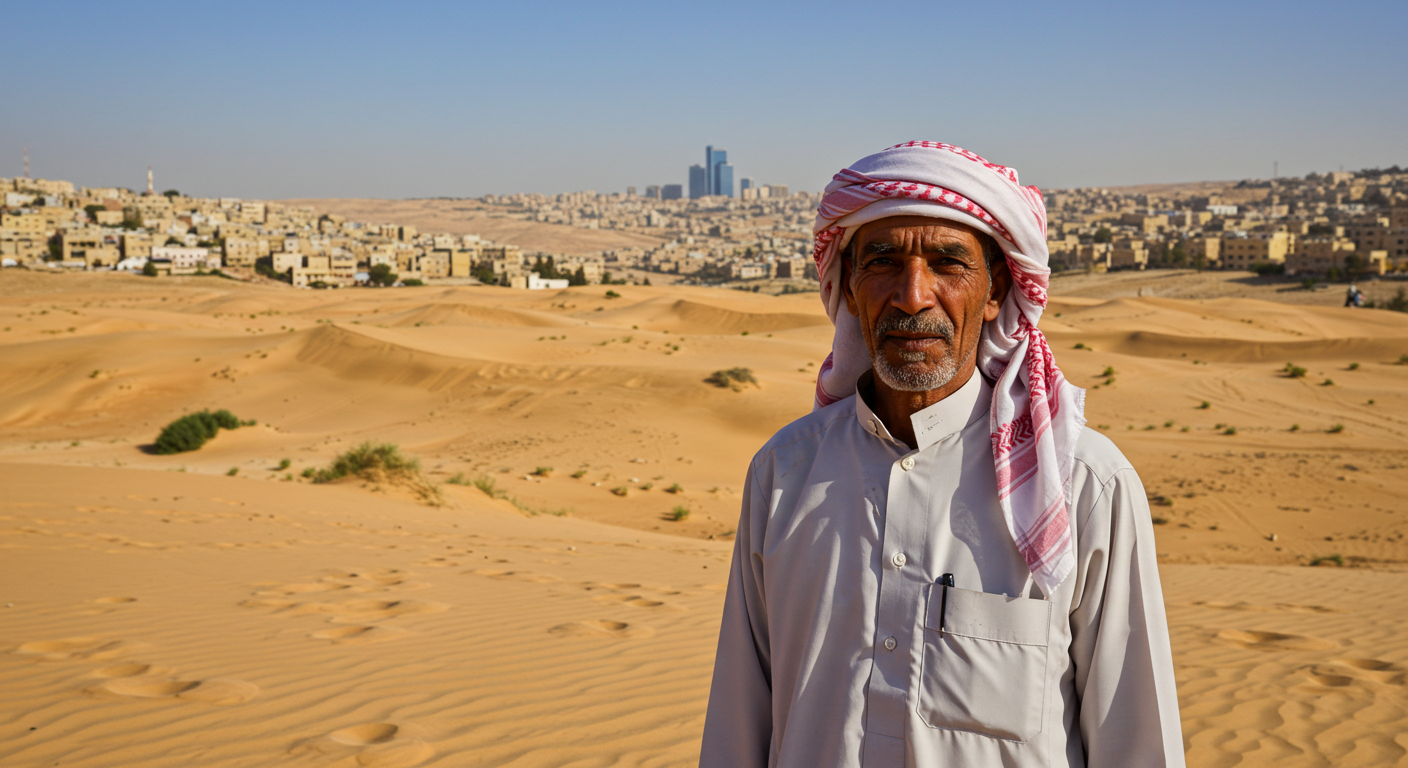Culture and Traditions of Jordan: Where Bedouin Heritage Meets Urban Grace
In the alleyways of Amman and the warmth of Bedouin tents, a deeply rooted culture thrives—a culture shaped by desert winds and urban civility. Jordan’s society has been built upon respect, hospitality, and tradition, with tribal heritage and modern sensibilities merging into a singular national identity.
🏜️ Bedouin Roots and Tribal Life
Traditional Jordanian culture is deeply influenced by Bedouin values. Family, tribal affiliation, and reverence for elders are foundational. Tribes still play a key role in social cohesion, conflict resolution, and even local politics.
🖼️ Image Prompt: Bedouin tents in the desert with tribe members gathered around a fire.
☕ Jordanian Hospitality
Hospitality is a cultural cornerstone. Guests are offered Arabic coffee in an elaborate ritual that symbolizes respect and generosity. Hosting is seen not as duty, but as an honor.
🖼️ Image Prompt: Close-up of traditional Arabic coffee being served in ornate cups.
🕌 Religion and Islamic Influence
Sunni Islam is the state religion and deeply informs social norms, attire, holidays, and daily rhythms. The call to prayer is part of daily life, and Ramadan is widely observed with communal spirit.
🖼️ Image Prompt: A historic mosque in Amman with worshippers in a courtyard.
👘 Traditional Clothing
Traditional garments like the dishdasha and abaya are still worn during festivals and ceremonies. Women in rural areas often wear embroidered dresses that reflect their tribe or region.
🖼️ Image Prompt: Men and women in Jordanian traditional dress at a cultural festival.
🎶 Music and Dance
Jordanian folk music features instruments like the oud, daf, and rababa. The dabke, a group line dance, is performed at weddings and social gatherings to express joy and unity.
🖼️ Image Prompt: Jordanian youth performing dabke in a public square.
📜 Arabic Language and Local Dialects
Arabic is the official language, with Jordanian dialects varying between regions. English is widely spoken, especially among younger generations, due to its presence in the education system.
🖼️ Image Prompt: A bilingual (Arabic-English) street sign in Amman with pedestrians walking by.
Conclusion
Jordanian culture reflects a graceful fusion of tradition and modernity. Rooted in tribal customs and religious values, it continues to evolve while preserving the spirit of hospitality and unity.
Culture of Lebanon: A Mosaic of Tradition and Modern Identity
In the heart of Beirut’s cobbled streets, where the scent of Arabic coffee mingles with the pulse of oud music, Lebanon’s culture thrives—not as a monolith but as a harmonious blend of religions, languages, and histories. From Maronite Christians to Sunni and Shia Muslims, Druze to Armenians, each community contributes to the rich tapestry that defines Lebanese identity.
🕌 Religious Diversity as a Cultural Foundation
Lebanon officially recognizes 18 religious sects, each maintaining unique customs, rituals, and festivals. Rather than creating division, this diversity often fuels cultural richness and mutual respect within communities.
🎭 Performing Arts and Theatre
Theatre and film in Lebanon have long served as a mirror to societal complexities. Playwrights like Zeina Daccache and Raouf Abou Daher explore issues of identity, politics, and resilience. Art in Lebanon is not just expression—it’s testimony and resistance.
🧥 Clothing: A Fusion of Traditional and Contemporary
From the vibrant robes in southern villages to Parisian-style fashion in central Beirut, clothing in Lebanon reflects a cultural duality. Traditional garments like the thobe and sherwal are still worn during ceremonies and festivals, embodying pride in heritage.
🍽️ Cuisine as Cultural Glue
Lebanese cuisine, from hummus and tabbouleh to kibbeh and grape leaves, transcends sectarian lines. Food is a daily celebration and an essential cultural connector, offering a delicious common ground for all Lebanese.
🥁 Music and Dance
Lebanese folk music, featuring instruments like the oud and qanun, underscores community gatherings and festivals. Dabke, the traditional group dance, symbolizes unity and joy. Today’s pop and fusion artists carry Lebanese music onto global stages.
📚 Language and Literature
While Arabic is the official language, French, English, and Armenian are widely used. Literary icons like Khalil Gibran and Amin Maalouf illustrate the creative power of Lebanon’s multilingual tradition.
Conclusion:
Lebanon’s culture, a dynamic mosaic of tradition and innovation, continues to thrive despite adversity. It stands as a living testament to coexistence, creativity, and the enduring strength of shared identity.





No comment